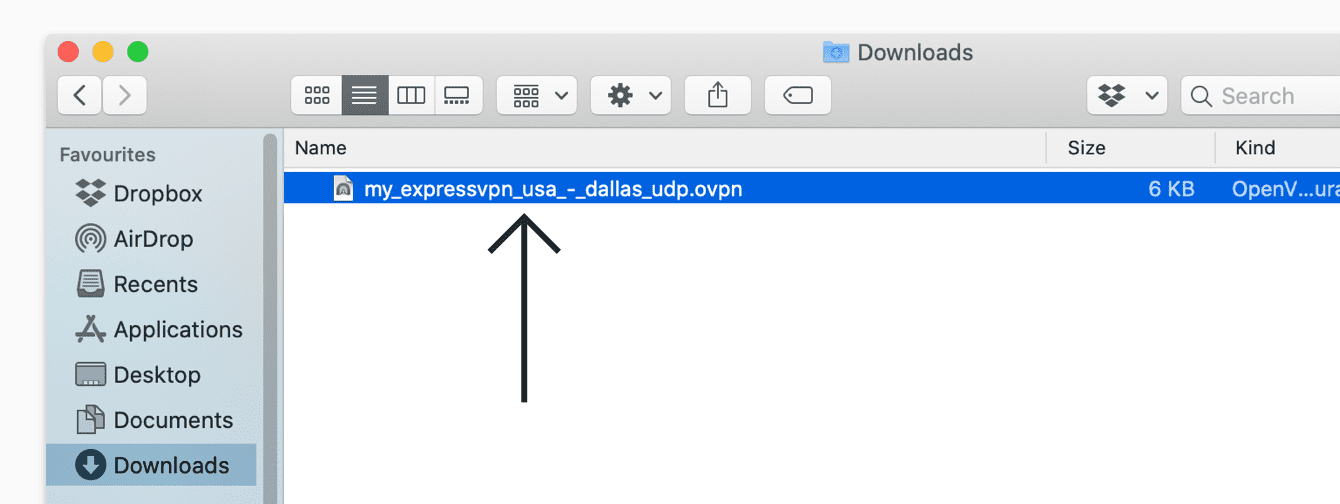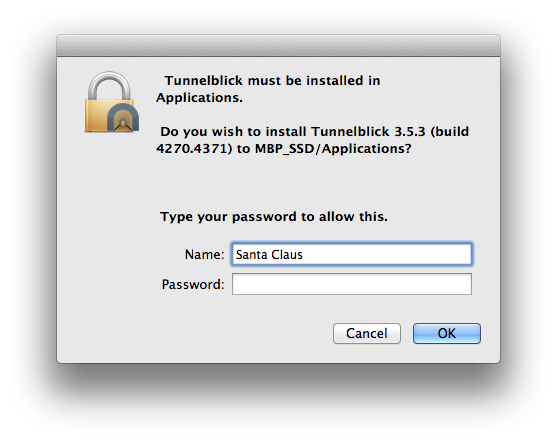- Download Tunnelblick 3.8.6a build 5711 for Mac. Fast downloads of the latest free software!
- Install Tunnelblick Mac; Tunnelblick Vpn Client; Install Tunnelblick Mac. Navigate to your Downloads folder and double-click the Tunnelblick installation file you have just downloaded (it has a.dmg extension). In the window that opens, double-click on the Tunnelblick icon. A new dialogue box will pop up, asking you if you are sure you want to.
Download Tunnelblick for Mac - Free and open source Graphical User Interface for OpenVPN that offers quick and easy control of the OpenVPN client and server connections. Download Tunnelblick 3.8.4beta02 for Mac. Fast downloads of the latest free software! Tunnelblick Mac High Sierra Download Mac. While macOS Mojave is released macOS high sierra still can be download and installed from the app store. If you are looking for installing or upgrading to high sierra on a mac I highly recommend you to download the app from the Apple app store because it is the easiest method, but if in some case you.
Highlighted Articles Discussion Group | On This Page For the latest information about Tun and Tap VPNs on macOS Big Sur, see Tunnelblick and macOS Big Sur. The ProblemApple has announced changes to macOS which affect many users of Tunnelblick. You might see a warning from Tunnelblick about this change, or you might see the following warning when connecting your VPN: What this means is:
How to tell if you have a 'tap' VPN or a 'tun' VPN
If you can't find a line that starts with any of the above, ask for help from the Tunnelblick Discussion Group. When will this happen?Apple does not announce its intentions in advance, so there may not be any prior notice of this change. Our best guess based on similar situations in the past is that the earliest Apple will make this change is in the last version of macOS Catalina, which is expected to be released in July or August of 2020. However, it is also possible that Apple will make the change earlier or later, and it is possible that Tunnelblick's VPNs will continue to work for some period of time even after Apple makes the change. For updated information about macOS Big Sur, see Tunnelblick on macOS Big Sur. How to modify a 'tun' VPN so it will continue to workYou need to remove the dev-node option if it exists in the VPN's OpenVPN configuration file:
If you made changes to the file and did not change it from shared to private and back to shared, the next time you connect the configuration you will be asked to have a computer administrator authorize the changes. If macOS Catalina still complainsAlways load tun or always load tapIf you have a 'tun' VPN which does not need to be modified, or has been modified as described above, and Tunnelblick or macOS Catalina still complains, then you have changed a Tunnelblick setting and should restore it to the default setting. All configurations should be set to 'Load tun driver automatically' and 'Load tap driver automatically'. These settings are found on the 'Connecting & Disconnecting' tab of the 'Advanced' settings window. Tunnelblick 3.8.3beta03 and later will automatically disable loading of 'tun' and 'tap' system extensions on versions of macOS that do not allow Tunnelblick to load them. Disabling SIPSystem Integrity Protection ('SIP') is a feature of macOS which helps keep your computer safe (see About System Integrity Protection on your Mac). Although it is not recommended because it makes your computer less safe, if you are using macOS Big Sur or later disabling SIP may allow your computer to connect a 'tap' VPN. See Configuring System Integrity Protection for instructions to disable SIP. Old versions of Tunnelblick will not helpThis situation is caused by a change in macOS, not a change in Tunnelblick, so older versions of Tunnelblick will not help. All Macs running OS X 7.5 or later should use the latest stable or beta version of Tunnelblick. See Deprecated Downloads for a version of Tunnelblick that should be used on earlier versions of OS X and on all PowerPC Macs. What Apple announcedApple has announced that 'future OS releases will no longer load system extensions that use deprecated KPIs by default'. Tunnelblick includes, and for some configurations loads one of two such extensions:
It isn't clear what Apple means by the phrase 'by default'. It may mean that Apple will provide a mechanism for users to allow loading of system extensions that use deprecated KPIs. However, Apple's practice has been to make such mechanisms very difficult to use, and the warning in macOS Catalina does not indicate such a mechanism will be provided. Beta versions of macOS Big Sur may allow system extensions to be loaded if SIP is disabled. See Tunnelblick on macOS Big Sur for an additional step that you need to take when using Tunnelblick 3.8.4beta01 and lower. What is Tunnelblick doing about it?In the short term:
In the longer term: At some point in the future when Tunnelblick no longer supports versions of macOS that can load system extensions, system extension loading and unloading will probably be removed from Tunnelblick. Historically, Tunnelblick has supported several years of macOS releases. As of June 2020 Tunnelblick supports OS X and macOS versions as far back as 10.7.5, which was released in 2012, so it is anticipated that the removal will not take place until the mid- to late-2020s. |
Follow this setup guide to correctly install Le VPN service with Tunnelblick and OpenVPN protocol support on Mac OS X using our step-by-step instructions.
Tunnelblick Mac Setup
Tunnelblick Windows Download
Tunnelblick is a free, open source graphic user interface for OpenVPN, a Virtual Private Network (VPN), on OS X and macOS. It provides easy control of OpenVPN client and/or server connections. It provides easy control of OpenVPN client and/or server connections. How to setup and configure OpenVPN Tunnelblick to use with Private Internet Access, a step by step guide with screenshots. How It Works; Download. Mac OS X 10.4; Mac OS X 10.5+. After connecting we set your operating system's DNS servers to 209.222.18.222 and 209.222.18.218. When using a DNS Leak testing site you should expect to see. Using Custom OpenVPN Binaries - Tunnelblick Free open source OpenVPN VPN client server software GUI for Mac OS X. Includes OpenVPN, OpenSSL, easy-rsa, and drivers. Tunnelblick's Kill Switch - Tunnelblick Free open source OpenVPN VPN client server software GUI for Mac OS X. Includes OpenVPN, OpenSSL, easy-rsa, and drivers.

1. Download Tunnelblick
Tunnelblick Download For Windows
To connect to OVPN you first need to download Tunnelblick.

2. Install Tunnelblick

Double-click on the file you downloaded in the previous step and go through the installation process.

3. Download the configuration you want
Double-click the downloaded file to import it into Tunnelblick.
If you see:
Choose Only Me. You might need to enter your password in order to allow Tunnelblick to install the configuration file.
4. Connect to OVPN
The tunnelblick icon, which looks like a tunnel, should be visible on the upper right corner of your screen.
Click the icon connect to the configuration file you downloaded.
5. Enter your credentials
Enter the username and password you used when creating your OVPN account.
Select Save to keychain if you want Tunnelblick to remember your login credentials.
Tunnelblick Mac Download
6. Finished
You should now be connected to OVPN and be able to browse the internet safely. To make sure everything was set up correctly, please check the dashboard to verify that you are connected.